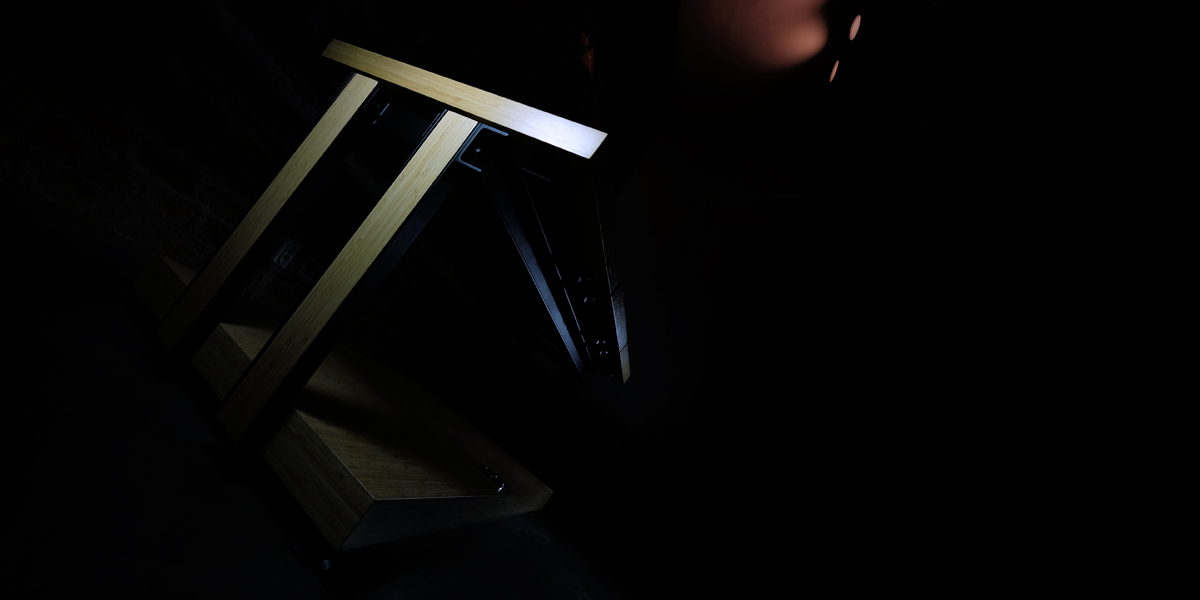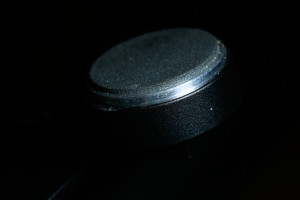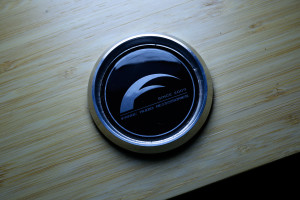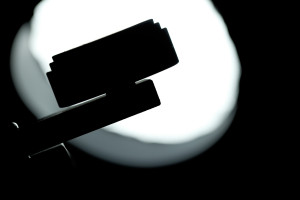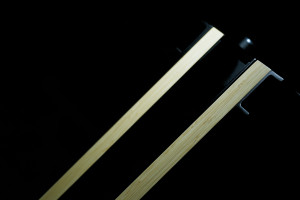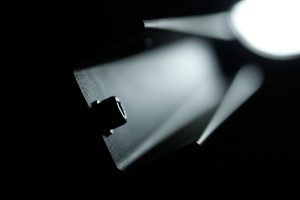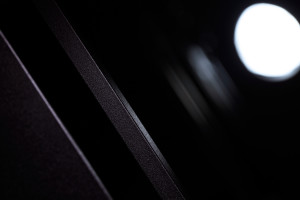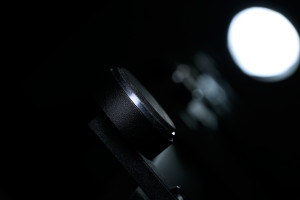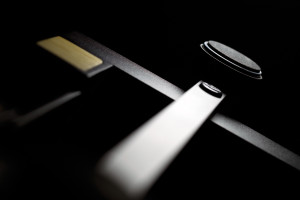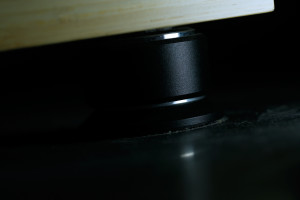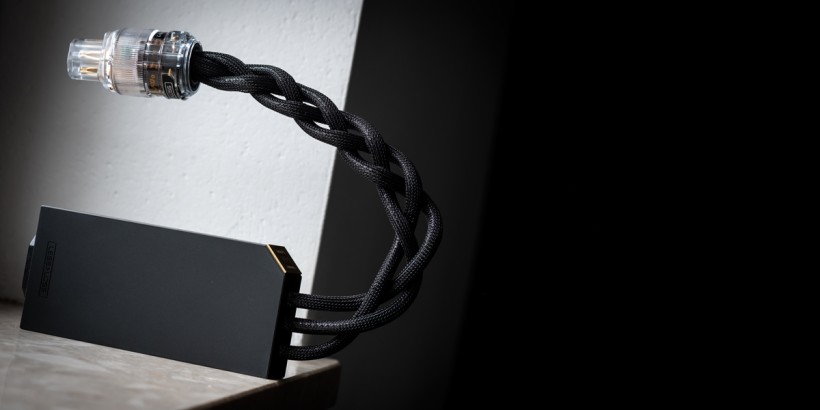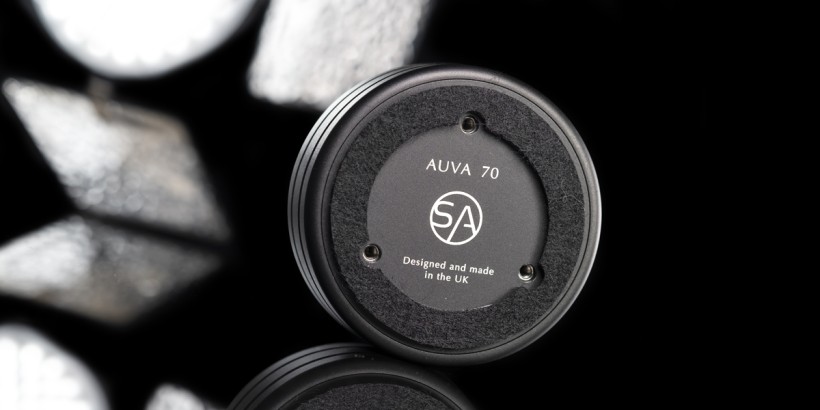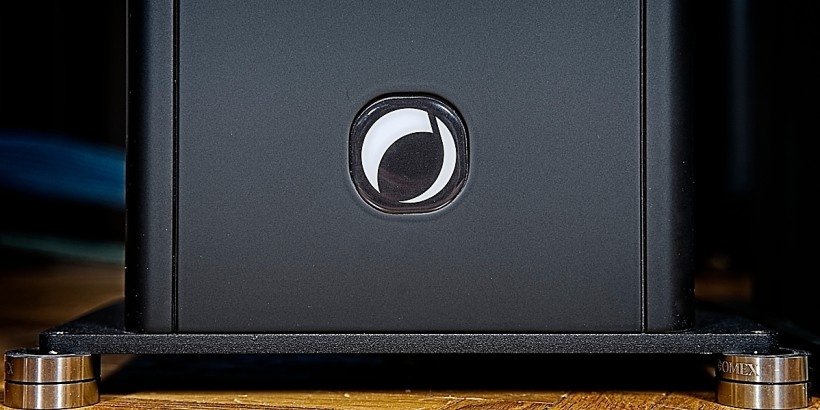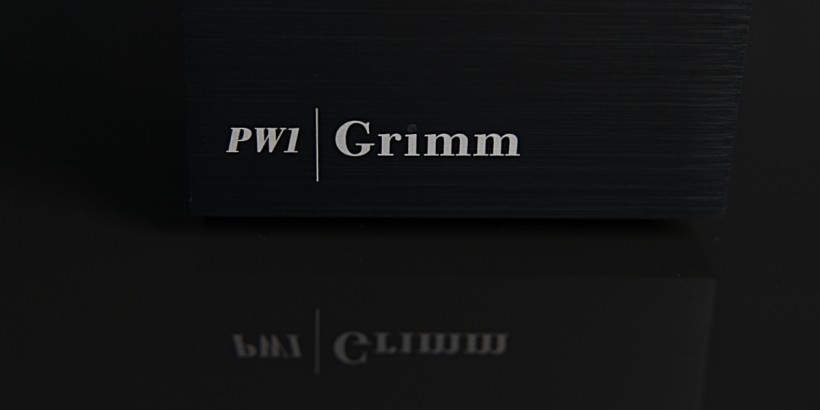The audio furniture topic is nothing short but polarizing. Many enthusiasts emphasize importance of such items, whereas the other camp sees them as the form over content case and nothing else. In order to find out what’s what, in this writing the focus is on the Wood Block Rack made by Polish Franc Audio Accessories manufacture. Enjoy!
Introduction
Let me start by saying that this writing is not a typical audio review but a story. Years ago, when the decision was made that yours truly is going to be an audio reviewer, he was aware that some things had to be taken care of first in order to be one. Experience in publishing and listening is a process and as such it can’t be really rushed. It comes naturally the more one writes and gets himself familiarized with incoming devices. Yet to have reference setup used daily is essential, the faster it’s assembled, the better. I started with a pair of KEF LS50 speakers, Denon PMA integrated and DCD CD player from the 1510AE series, QED and Gigawatt cables, power strip by the latter company and a variety of headphones and amplifiers to do justice to these was a part of the whole too. The only missing piece was a nice audio rack to make this picture complete. In Poland there are several manufacturers known for audio furniture. Past a rather short discussion with Rogoz Audio owner, he decided to prepare something that would suit my needs. Needless to say, mistakes were made that day. That kind man asked me about a particular model and dimensions which would work for me. I’ve decided to go with his three-legged and three shelves high version of famous Rogoz 3QB3 rack. Back then the initial thought was that this piece of audio furniture would look professional and work as intended. It both looked and worked as expected, it really did. But since each 45 cm wide shelf could fit only one device, the outcome was very easy to predict. Yes, the rear leg of my first rack was the obvious obstacle, some crucial sockets were unreachable as there wasn’t enough space to use them. The order of such a product was probably the most unreasonable and short-sighted decision I’ve ever made as a journalist.
In Poland there are several manufacturers known for audio furniture. Past a rather short discussion with Rogoz Audio owner, he decided to prepare something that would suit my needs. Needless to say, mistakes were made that day. That kind man asked me about a particular model and dimensions which would work for me. I’ve decided to go with his three-legged and three shelves high version of famous Rogoz 3QB3 rack. Back then the initial thought was that this piece of audio furniture would look professional and work as intended. It both looked and worked as expected, it really did. But since each 45 cm wide shelf could fit only one device, the outcome was very easy to predict. Yes, the rear leg of my first rack was the obvious obstacle, some crucial sockets were unreachable as there wasn’t enough space to use them. The order of such a product was probably the most unreasonable and short-sighted decision I’ve ever made as a journalist.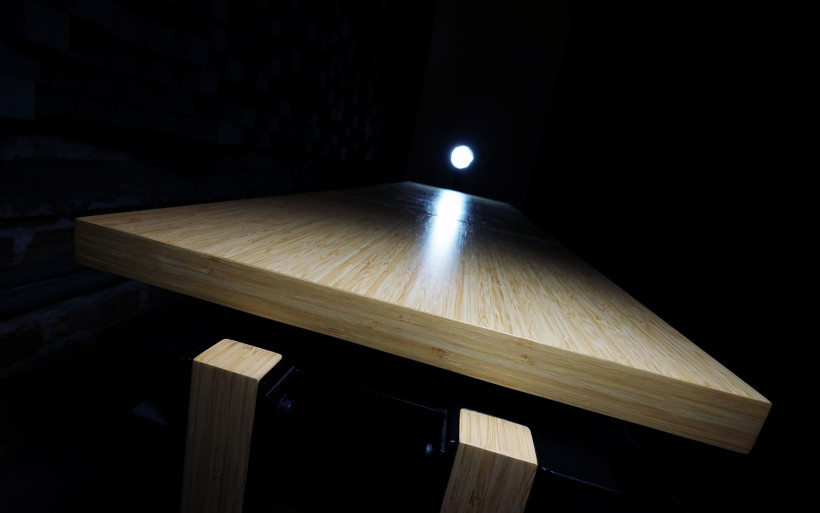 Let’s fast-forward several years. This scribe’s reference rig changed significantly and so did his furniture needs. One of Polish distributors sent to me his ply based K-Rak rack by Lecontoure manufacture and this product served me for three winters or so. Not only rear of each used device became easily accessible, K-Rak could store four decks of regular size and shape in total. When LampizatOr’s two-boxed Level7 arrived, the above mentioned ply affair became crowded more than I’d like, yet still served its purpose well. But once this d/a converter was no more, the Golden Gate flagship became my reference instead and four other rather heavy decks appeared, all this served as an incentive to make yet another furniture related change. Needless to say, here’s where the Wood Block Rack by Polish Franc Audio Accessories tale begins.
Let’s fast-forward several years. This scribe’s reference rig changed significantly and so did his furniture needs. One of Polish distributors sent to me his ply based K-Rak rack by Lecontoure manufacture and this product served me for three winters or so. Not only rear of each used device became easily accessible, K-Rak could store four decks of regular size and shape in total. When LampizatOr’s two-boxed Level7 arrived, the above mentioned ply affair became crowded more than I’d like, yet still served its purpose well. But once this d/a converter was no more, the Golden Gate flagship became my reference instead and four other rather heavy decks appeared, all this served as an incentive to make yet another furniture related change. Needless to say, here’s where the Wood Block Rack by Polish Franc Audio Accessories tale begins.
Paweł
The Franc Audio Accessories manufacture is on the market since 2009. This operation is a one man show and Paweł Skulimowski, a.k.a. Franc, is not only its founder, but he handles almost everything there is to handle. When asked how it all started, the gent said that his audio adventure began around 1998. Back then he obtained his first audio setup; Philips CD-951 CD player, a pair of TDL RTL 3SE floorstanders and Musical Fidelity Electra 11 amplifier. That sweet eleven is still with him. Paweł found out about various resonance control accessories from domestic printed press. Back then he was eager to tinker on his own instead of any heavyweight changes in setup. Since it already cost him a lot of money, to try to squeeze a tiny bit more performance out of it on his own was a smart and interesting thing to do, but that’s not the most important part. Long before his audio adventure, as a child Paweł was first into building bikes. As our aficionado puts it, he was born with a hammer in one hand and a chisel was held in the other. Needless to say, for this enthusiast the game was clearly on. Mr Skulimowski’s background is impressive. He graduated at the Technical University of Gdańsk with the Faculty of Mechanical Engineering, whereas machines building and welding is his specialization and he’s also an International and European welding engineer on top of all else. Oddly, in his work Paweł avoids wielded elements in favor of mechanical connections; via screws etc. For years he worked as a QC chief in a turbines related consortium. The outcome is that Paweł possessed extensive knowledge about reduction, anodizing and combining materials of different structures and this is the foundation of his work. It’s undeniable that – as far as tech oriented job goes – a proper education makes things this much easier. In case of Mr Skulimowski this worked out quite well and industrial design and architecture as merely two out of his many hobbies helped too.
Mr Skulimowski’s background is impressive. He graduated at the Technical University of Gdańsk with the Faculty of Mechanical Engineering, whereas machines building and welding is his specialization and he’s also an International and European welding engineer on top of all else. Oddly, in his work Paweł avoids wielded elements in favor of mechanical connections; via screws etc. For years he worked as a QC chief in a turbines related consortium. The outcome is that Paweł possessed extensive knowledge about reduction, anodizing and combining materials of different structures and this is the foundation of his work. It’s undeniable that – as far as tech oriented job goes – a proper education makes things this much easier. In case of Mr Skulimowski this worked out quite well and industrial design and architecture as merely two out of his many hobbies helped too. Paweł privately is a very passionate individual, open to people. His family aside, what drives him is the creation act itself, namely inventing things within the realm of his education and knowledge. He’s also keen drummer, hence he’s perfectly aware of how certain instruments sound like in real life. Heck, our man even knows a thing or two about sound mixing as he performed in domestic Soja band years back. They even opened before trip hop legend Massive Attack a good while ago. Quite an achievement if someone asks me. These days our engineer plays solely at home, simply because he’s focused on his family and work. Needless to say, there’s no time left to pursue a professional musician’s career.
Paweł privately is a very passionate individual, open to people. His family aside, what drives him is the creation act itself, namely inventing things within the realm of his education and knowledge. He’s also keen drummer, hence he’s perfectly aware of how certain instruments sound like in real life. Heck, our man even knows a thing or two about sound mixing as he performed in domestic Soja band years back. They even opened before trip hop legend Massive Attack a good while ago. Quite an achievement if someone asks me. These days our engineer plays solely at home, simply because he’s focused on his family and work. Needless to say, there’s no time left to pursue a professional musician’s career.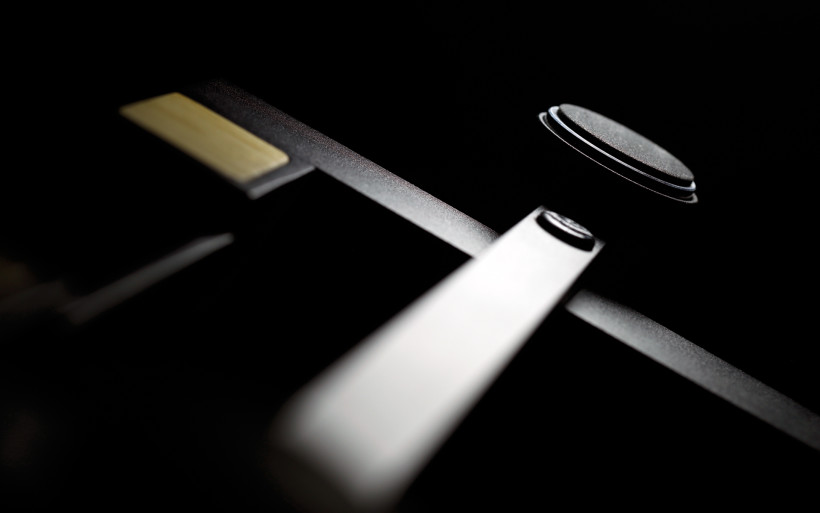 Several phone conversations with Paweł ended up in the same fashion, namely escalated to an hour plus long interactions with lots of laugh each and every time. Time wasted? Not at all, to know an individual’s mindset is to understand why and how he does what he does. When asked about things he acknowledges in audio, Paweł said that he trusts his own pair of ears above all else and not a given price tag. He’s perfectly aware that it can make a difference, yet that’s not always the case. Our constructor admires unique ideas, whereas repetitiveness and cuteness are despised. One quick look at his portfolio and there you have it, he’s a perfectionist too. The Franc Audio Accessories site is very clean, with photo work visible there way above local industry standards. The attention to details is omnipresent, that’s for sure.
Several phone conversations with Paweł ended up in the same fashion, namely escalated to an hour plus long interactions with lots of laugh each and every time. Time wasted? Not at all, to know an individual’s mindset is to understand why and how he does what he does. When asked about things he acknowledges in audio, Paweł said that he trusts his own pair of ears above all else and not a given price tag. He’s perfectly aware that it can make a difference, yet that’s not always the case. Our constructor admires unique ideas, whereas repetitiveness and cuteness are despised. One quick look at his portfolio and there you have it, he’s a perfectionist too. The Franc Audio Accessories site is very clean, with photo work visible there way above local industry standards. The attention to details is omnipresent, that’s for sure. All design, final assembly, QC work and bureaucracy tasks are on Paweł’s shoulders exclusively, whereas several manufacturers are responsible for semi-products. He rolls with the same domestic companies for years and has also explained to me that it took quite a while to find subcontractors qualified for the FAA job. Past several turnery oriented adventures, Paweł realized that CNC is the only viable way to go as far as precision work goes. Finally, one Polish company in particular was found. This subcontractor for the worldwide famous Ferrari operation is known to be reliable, decently priced and placed several clicks from Mr Skulimowski’s place. He was also very open why to have his own CNC based production line is off the table. Well, in order to make it work financial wise, he’d have to deliver huge OEM parts to other and not audio related manufactures, which is a no go. The aftermath of this road is obvious. Additional staff would have to be involved, the total upkeep would increase significantly, the whole operation’s expansion in general would have to occur and – in order to make ends meet – the current core business would have to be treated as a hobby and nothing else. All this is unnecessary, at leas for now. As a details oriented fanatic, Paweł is happy only when he can personally keep an eye on everything. And to not be pressured at all to do any big moves is liberating, Mr Skulimowski can roll as he sees fit. So there you have it, a small Polish manufacture by choice, known for luxurious goods. Doesn’t this picture show what this hobby is also about? One doesn’t have to go big in order to be happy.
All design, final assembly, QC work and bureaucracy tasks are on Paweł’s shoulders exclusively, whereas several manufacturers are responsible for semi-products. He rolls with the same domestic companies for years and has also explained to me that it took quite a while to find subcontractors qualified for the FAA job. Past several turnery oriented adventures, Paweł realized that CNC is the only viable way to go as far as precision work goes. Finally, one Polish company in particular was found. This subcontractor for the worldwide famous Ferrari operation is known to be reliable, decently priced and placed several clicks from Mr Skulimowski’s place. He was also very open why to have his own CNC based production line is off the table. Well, in order to make it work financial wise, he’d have to deliver huge OEM parts to other and not audio related manufactures, which is a no go. The aftermath of this road is obvious. Additional staff would have to be involved, the total upkeep would increase significantly, the whole operation’s expansion in general would have to occur and – in order to make ends meet – the current core business would have to be treated as a hobby and nothing else. All this is unnecessary, at leas for now. As a details oriented fanatic, Paweł is happy only when he can personally keep an eye on everything. And to not be pressured at all to do any big moves is liberating, Mr Skulimowski can roll as he sees fit. So there you have it, a small Polish manufacture by choice, known for luxurious goods. Doesn’t this picture show what this hobby is also about? One doesn’t have to go big in order to be happy. I was told that the Franc Audio Accessories manufacture gained its first distributor in 2010 and it wasn’t a Polish one but our German neighbour. Yes, this operation became visible abroad at first and once fairly known there, domestic enthusiasts started to take interest in it. Paweł also admitted that progress is steady from day one and he developed a relation with several other audio manufacturers as well. His ceramic feet are to be found in products made by Ayon, APL, Acoustic Preference, Ixoost and Amare Musica. Presumably in the not too distant future this part of the FAA portfolio will expand even more. But wishful thinking aside, to deliver one’s own and unchanged goods to heavyweight caliber and respected firms of i.e. Ayon size surely is noteworthy.
I was told that the Franc Audio Accessories manufacture gained its first distributor in 2010 and it wasn’t a Polish one but our German neighbour. Yes, this operation became visible abroad at first and once fairly known there, domestic enthusiasts started to take interest in it. Paweł also admitted that progress is steady from day one and he developed a relation with several other audio manufacturers as well. His ceramic feet are to be found in products made by Ayon, APL, Acoustic Preference, Ixoost and Amare Musica. Presumably in the not too distant future this part of the FAA portfolio will expand even more. But wishful thinking aside, to deliver one’s own and unchanged goods to heavyweight caliber and respected firms of i.e. Ayon size surely is noteworthy.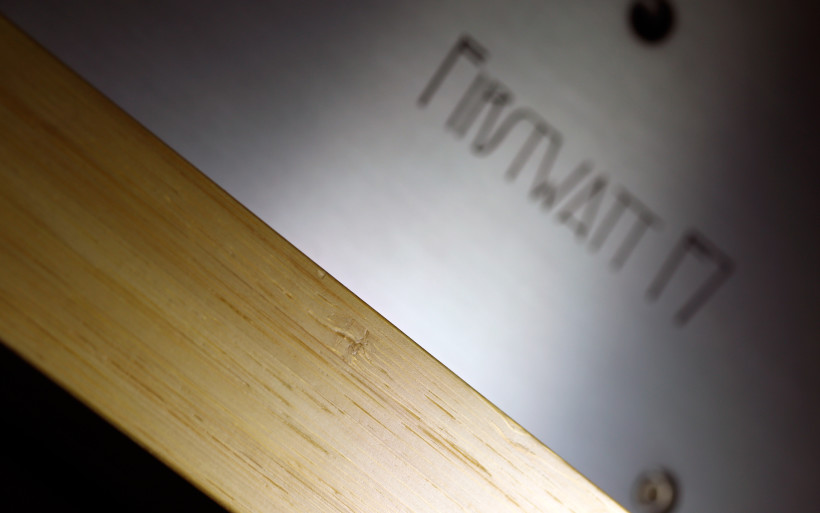 Let’s take a look at the current FAA offer. The very fist commercially available product by Paweł – Ceramic Disc Classic – is available since the very beginning of his company and still available. No MK2 versions, no major changes but 19 different materials used in this product from day one. If a case of this sort doesn’t build confidence in a given audio brand, I don’t know what does. Moving along, Ceramic Disc Fat Foot and Slim Foot are Classic’s bigger and smaller versions respectively. These exploit similar solutions, yet are meant to be used under products of different weight in order to be effective. Next in line are two Wood Block series platforms; Slim and Fat. These look quite ordinarily, yet are made out of 52/9 and 45/8 components and materials respectively. People say that there’s more than meets the eye with these two. I can’t say as neither I haven’t used not disassembled these products and the same story is with Paweł’s Power ON-E passive distributor. It looks both substantial and expensive and – to be perfectly honest – the same descriptive measures fit nicely to every product designed and assembled by this man. His Wood Block Rack is no different. In February 2017 it turned out that this audio furniture covers all of this scribe’s needs perfectly, an invoice was sent in the process, he’s a happy WBR user ever since and now ready to tell the rest of this FAA story.
Let’s take a look at the current FAA offer. The very fist commercially available product by Paweł – Ceramic Disc Classic – is available since the very beginning of his company and still available. No MK2 versions, no major changes but 19 different materials used in this product from day one. If a case of this sort doesn’t build confidence in a given audio brand, I don’t know what does. Moving along, Ceramic Disc Fat Foot and Slim Foot are Classic’s bigger and smaller versions respectively. These exploit similar solutions, yet are meant to be used under products of different weight in order to be effective. Next in line are two Wood Block series platforms; Slim and Fat. These look quite ordinarily, yet are made out of 52/9 and 45/8 components and materials respectively. People say that there’s more than meets the eye with these two. I can’t say as neither I haven’t used not disassembled these products and the same story is with Paweł’s Power ON-E passive distributor. It looks both substantial and expensive and – to be perfectly honest – the same descriptive measures fit nicely to every product designed and assembled by this man. His Wood Block Rack is no different. In February 2017 it turned out that this audio furniture covers all of this scribe’s needs perfectly, an invoice was sent in the process, he’s a happy WBR user ever since and now ready to tell the rest of this FAA story.
Build
Franc Audio Accessories Wood Block Rack delivered to my place is the biggest and heaviest product in this company’s portfolio. How big it is, exactly? Picture a monstrosity of (H x D x W) 61 X 55 x 160 cm measurements and nearly 80 kilograms heavy. In short, it’s huge. To a point where every single piece of audio hardware placed there was dwarfed by it. As far as specs go, everything’s been covered already. The Polish product is a rack after all. Its manufacturer hints via the official FAA webpage that it will work with the usual suspects; turntables, amplifiers, DACs, media servers, power conditioners and so on. Speakers/monitors and matching stands for the latter are off the table obviously. Paweł’s signature feet will handle these instead.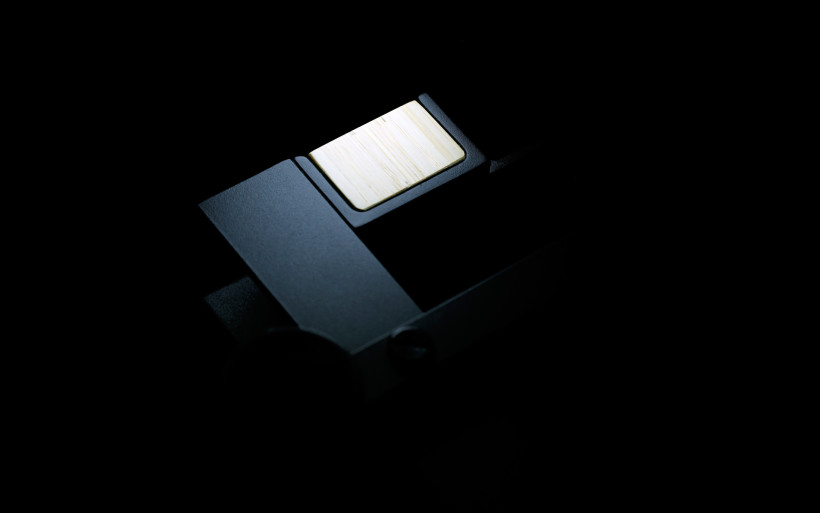 After taking a good long look at the FAA offer, it’s highly likely that vanilla is its owner’s favourite flavor. Each piece of his audio furniture is visually plain and there’s a good reason why. He’s not into overly complicated and quirky designs in general, less is more must be his motto. He picked the good ol’ Scandinavian path, namely aesthetics simple, minimalist or ascetic even. No bling-bling anywhere in sight and… this works. There’s quite a chance that such simple looking product will work far better in a given environment than its ornamented equivalent of irregular shape and size. Let’s throw in exceptionally important wife acceptance factor and there you have it. The less is more approach does the job more times than it doesn’t. As far as this scribe’s taste is involved, very industrial and optically massive design of his WBR was one of several reasons why the decision was made to pursue this product in particular and none other. Let’s be honest, we buy with our ears and eyes.
After taking a good long look at the FAA offer, it’s highly likely that vanilla is its owner’s favourite flavor. Each piece of his audio furniture is visually plain and there’s a good reason why. He’s not into overly complicated and quirky designs in general, less is more must be his motto. He picked the good ol’ Scandinavian path, namely aesthetics simple, minimalist or ascetic even. No bling-bling anywhere in sight and… this works. There’s quite a chance that such simple looking product will work far better in a given environment than its ornamented equivalent of irregular shape and size. Let’s throw in exceptionally important wife acceptance factor and there you have it. The less is more approach does the job more times than it doesn’t. As far as this scribe’s taste is involved, very industrial and optically massive design of his WBR was one of several reasons why the decision was made to pursue this product in particular and none other. Let’s be honest, we buy with our ears and eyes. The ordering act was very straightforward. One out of hundred and then some veneers available had to be cherry-picked. Every RAL palette color could also be involved, so were both matte and glossy finishes. That’s the shelves part done, whereas the frame itself is a different option, not as extensively customized. Only several coatings were on the table. Black, white and graphite finishes will be the usual suspects for most people. Purely because of aesthetic reasons, the decision was made to proceed with bamboo veneering job, black frame in order to emphasize every shelf and all that served in matte. Three weeks later, a manufacturer personally delivered the goods stored in a fancy and costly travel case. These days when I think about gymnastics we had to pull off in order to squeeze through rather tight corridors of my crib with nearly 90 kilograms heavy package, my hands start to shake oddly.
The ordering act was very straightforward. One out of hundred and then some veneers available had to be cherry-picked. Every RAL palette color could also be involved, so were both matte and glossy finishes. That’s the shelves part done, whereas the frame itself is a different option, not as extensively customized. Only several coatings were on the table. Black, white and graphite finishes will be the usual suspects for most people. Purely because of aesthetic reasons, the decision was made to proceed with bamboo veneering job, black frame in order to emphasize every shelf and all that served in matte. Three weeks later, a manufacturer personally delivered the goods stored in a fancy and costly travel case. These days when I think about gymnastics we had to pull off in order to squeeze through rather tight corridors of my crib with nearly 90 kilograms heavy package, my hands start to shake oddly.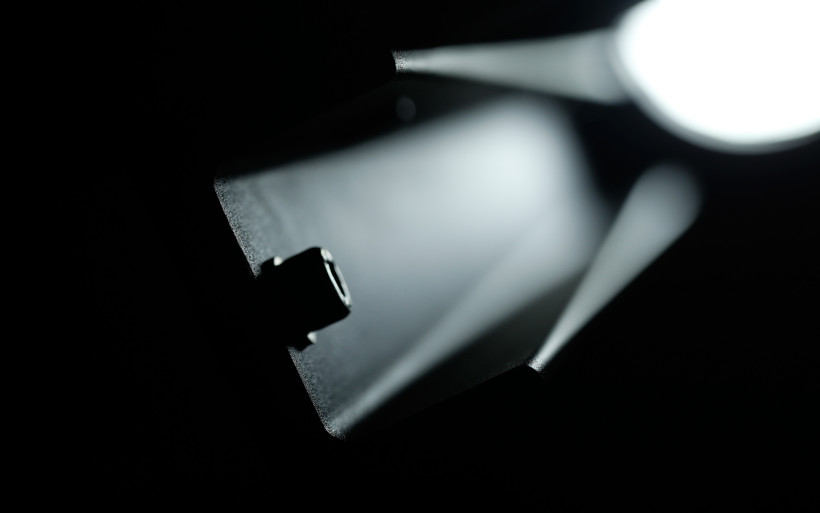 Franc Audio Accessories Wood Block Rack is available in three variants; two (1+1), three (1+2) and four shelves large (1+3). Yours truly decided to go after the biggest model, simply because it can handle the most devices, six in total. It’s worth to remember that the lowest level is always one shelf, yet as wide as everything above it. In any case, if my WBR had two or four additional places, these I’d have filled with gear with ease too. Point being, journalists aren’t typical customers usually. Still, either 1+1 or 1+2 version will probably do the job just fine for most regular enthusiasts out there. And since it’s smaller, also less costly in the process.
Franc Audio Accessories Wood Block Rack is available in three variants; two (1+1), three (1+2) and four shelves large (1+3). Yours truly decided to go after the biggest model, simply because it can handle the most devices, six in total. It’s worth to remember that the lowest level is always one shelf, yet as wide as everything above it. In any case, if my WBR had two or four additional places, these I’d have filled with gear with ease too. Point being, journalists aren’t typical customers usually. Still, either 1+1 or 1+2 version will probably do the job just fine for most regular enthusiasts out there. And since it’s smaller, also less costly in the process.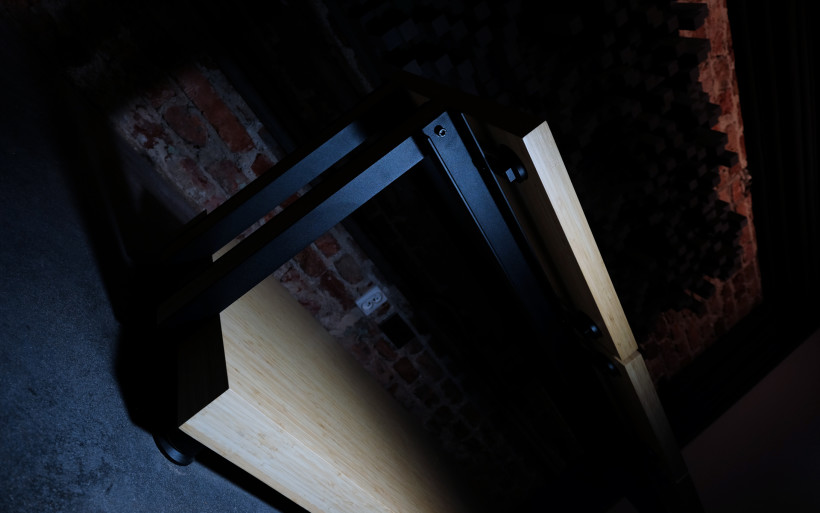 Wood Block Rack may look minimalist, yet in reality it isn’t and – as per usual – the devil is in the details. One very wide and thick shelf found on the ground floor can fit three decks. It sits on four Ceramic Disc Fat Feet by the same manufacturer and can handle loads of 400+ kilograms in total. Needless to say, the heaviest products should be placed there. Moving up, one easily distinguishable element is a massive frame made out of non-ferrous metal. Which one? Now that’s one of Paweł’s most precious secrets. In any case, this element looks like it escaped from railroad track in a hurry and at the same time it contributes to the overall visuals significantly. The whole Ceramic Disc application is based on three ceramic balls between two solid platforms; the lower is firm whereas the upper one floats.
Wood Block Rack may look minimalist, yet in reality it isn’t and – as per usual – the devil is in the details. One very wide and thick shelf found on the ground floor can fit three decks. It sits on four Ceramic Disc Fat Feet by the same manufacturer and can handle loads of 400+ kilograms in total. Needless to say, the heaviest products should be placed there. Moving up, one easily distinguishable element is a massive frame made out of non-ferrous metal. Which one? Now that’s one of Paweł’s most precious secrets. In any case, this element looks like it escaped from railroad track in a hurry and at the same time it contributes to the overall visuals significantly. The whole Ceramic Disc application is based on three ceramic balls between two solid platforms; the lower is firm whereas the upper one floats.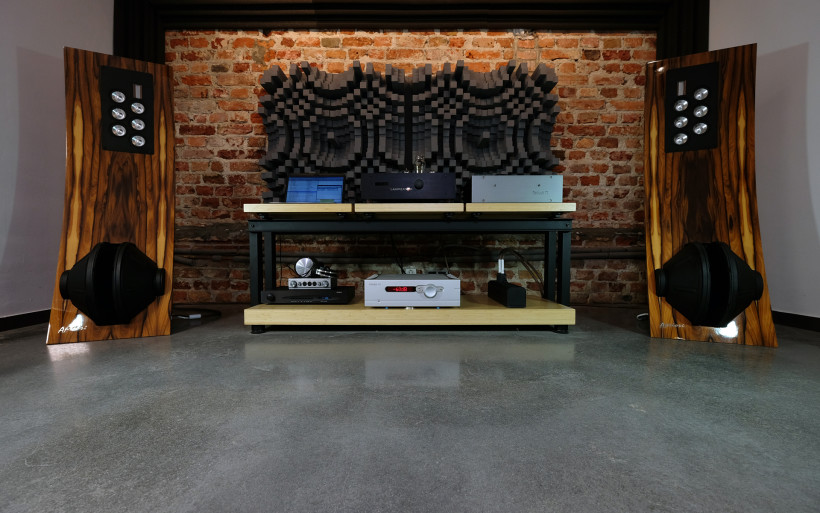 Each side of the biggest platform sport two vertical legs. These are placed closely one to another, the gap between ’em is only 10 centimeters wide. Something similar is seen also in products by German Finite Elemente company. The upshot of this solution is that the whole rack looks quite sleek. Are there any downsides? Well, I couldn’t find one. Moving on, it might seem that said legs are screwed to the lowest platform directly, yet I was informed that this is not factual. The whole upper level is decoupled from the base via proprietary insulators made out of several different materials, i.e. Teflon. These elements are to be found between legs and the base, though hid from prying eyes for obvious reasons. In order to see what’s what, one would have to dismantle the whole top level and unscrew vertical legs next, which isn’t that easy. A block of veneered material (the same as the base and top shelves) is screwed to the inside of each leg and the only reason for these to be there is to make the product visually more attractive. Subjectively speaking it works like a charm. My goal was to have a dark frame and the rest bright, just to make all devices placed on the rack to pop properly. I strongly believe that such color scheme works as intended indeed. YMMV, though.
Each side of the biggest platform sport two vertical legs. These are placed closely one to another, the gap between ’em is only 10 centimeters wide. Something similar is seen also in products by German Finite Elemente company. The upshot of this solution is that the whole rack looks quite sleek. Are there any downsides? Well, I couldn’t find one. Moving on, it might seem that said legs are screwed to the lowest platform directly, yet I was informed that this is not factual. The whole upper level is decoupled from the base via proprietary insulators made out of several different materials, i.e. Teflon. These elements are to be found between legs and the base, though hid from prying eyes for obvious reasons. In order to see what’s what, one would have to dismantle the whole top level and unscrew vertical legs next, which isn’t that easy. A block of veneered material (the same as the base and top shelves) is screwed to the inside of each leg and the only reason for these to be there is to make the product visually more attractive. Subjectively speaking it works like a charm. My goal was to have a dark frame and the rest bright, just to make all devices placed on the rack to pop properly. I strongly believe that such color scheme works as intended indeed. YMMV, though.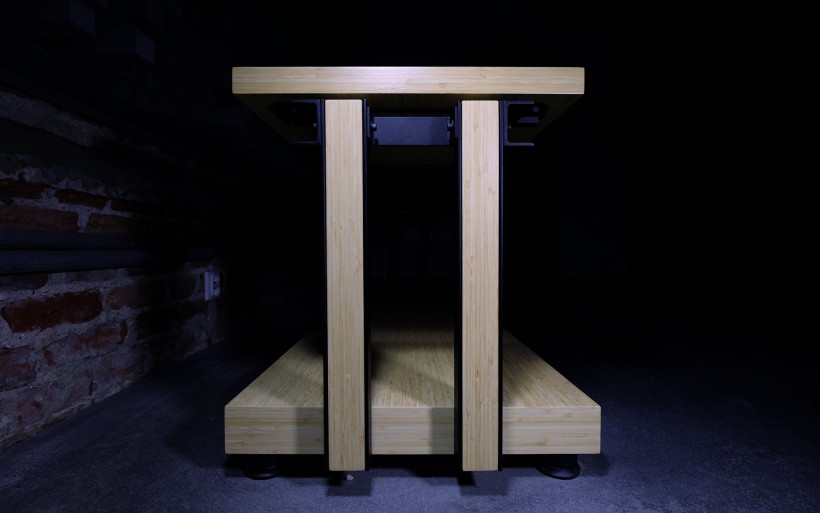 Let’s move to the upper level. Two massive and horizontally placed bars are to be found there. Each connects a pair of legs placed at the opposite sides of the product via big screws. And there are six transversely placed rods in total on top of these huge horizontal elements. We’ve already established that three removable upper shelves are to be found there, hence each is handled by two rods. Square shaped ledges are decoupled from rods via proprietary Ceramic Disc Tablets. Twelve of these small buggers are used in total and can’t be bought separately. Yup, this is Paweł’s pride, reserved only for his OEM partners and special projects. And lastly, what is hidden under the veneer job? Well, MDF and here’s why: Mr Skulimowski is obsessed with recurrence in his products. According to him, only MDF guarantees this, not real wood or compressed ply. He thought initially about artificial composites and several years back one of Franc Audio Accessories platforms exploited this. Said product worked rather well, at least so I’ve been told, yet was very costly for what it was. Needless to say, if this or similar tech was used in the Wood Block Rack, this product’s already steep asking price would have to go up significantly.
Let’s move to the upper level. Two massive and horizontally placed bars are to be found there. Each connects a pair of legs placed at the opposite sides of the product via big screws. And there are six transversely placed rods in total on top of these huge horizontal elements. We’ve already established that three removable upper shelves are to be found there, hence each is handled by two rods. Square shaped ledges are decoupled from rods via proprietary Ceramic Disc Tablets. Twelve of these small buggers are used in total and can’t be bought separately. Yup, this is Paweł’s pride, reserved only for his OEM partners and special projects. And lastly, what is hidden under the veneer job? Well, MDF and here’s why: Mr Skulimowski is obsessed with recurrence in his products. According to him, only MDF guarantees this, not real wood or compressed ply. He thought initially about artificial composites and several years back one of Franc Audio Accessories platforms exploited this. Said product worked rather well, at least so I’ve been told, yet was very costly for what it was. Needless to say, if this or similar tech was used in the Wood Block Rack, this product’s already steep asking price would have to go up significantly.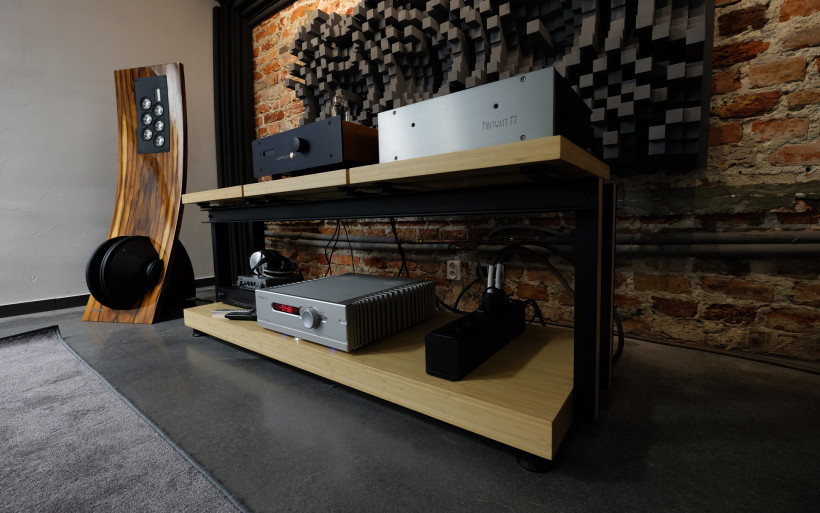 As far as fit’n’finish goes, the Wood Block Rack delivered to yours truly is terrifically built. Though it looks quite plain and modest, a degree of complication is there. And every shelf, leg or rod is of quality, cut within a fracture of millimeter tolerance. Ledges fit to their respective places perfectly and symmetry can be achieved no matter the scenario. Veneering is flawless all across the board and so are mounting angles. Even very nicely made and aluminium based FAA logo sits ideally in the center of the base. Speaking of which, it’s very solid and fixed, whereas the upper level is wobbly when empty. Yet once a bulky amplifier or a DAC sits there, there’s no movement at all. The whole product feels and looks substantial. It’s very expensive, yet finished to the highest standards. Subjectively speaking, I really like it and purely objectively not a single thing I’d change. I haven’t yet found anything which would require such actions after eight months of rather extensive usage. And lastly, one of the most important reasons behind the Wood Block Rack purchase is enormous ease to reach to every cable or deck on it. This might sound quirky, but from my perspective this Polish rack is very effortless to use, more so than two previously used products from the very same category.
As far as fit’n’finish goes, the Wood Block Rack delivered to yours truly is terrifically built. Though it looks quite plain and modest, a degree of complication is there. And every shelf, leg or rod is of quality, cut within a fracture of millimeter tolerance. Ledges fit to their respective places perfectly and symmetry can be achieved no matter the scenario. Veneering is flawless all across the board and so are mounting angles. Even very nicely made and aluminium based FAA logo sits ideally in the center of the base. Speaking of which, it’s very solid and fixed, whereas the upper level is wobbly when empty. Yet once a bulky amplifier or a DAC sits there, there’s no movement at all. The whole product feels and looks substantial. It’s very expensive, yet finished to the highest standards. Subjectively speaking, I really like it and purely objectively not a single thing I’d change. I haven’t yet found anything which would require such actions after eight months of rather extensive usage. And lastly, one of the most important reasons behind the Wood Block Rack purchase is enormous ease to reach to every cable or deck on it. This might sound quirky, but from my perspective this Polish rack is very effortless to use, more so than two previously used products from the very same category.
Sound
Before we’ll dig deeper, let me get something off my chest first. I’m no resonance control expert. Several experiments conducted with such components in the past is probably more experience an average audio Joe had, but nothing shocking nonetheless. Yet after several months spent with the Polish rack, I strongly believe that I got a good impression of what it does. There, now let’s move on. Before the Wood Block Rack arrived, my two main devices – LampizatOr Golden Gate and Trilogy 925 integrated – sat on the ply based K-Rak, next were transported to the newcomer’s shelves and remained on these for quite a while. Then the opposite scenario occurred once more. After this experience, K-Rak was sent to my warehouse and remains there ever since. My reference decks were also placed on the polished concrete floor between transitions from one product to the other, just in order to find out how intense changes took place. Here’s the story.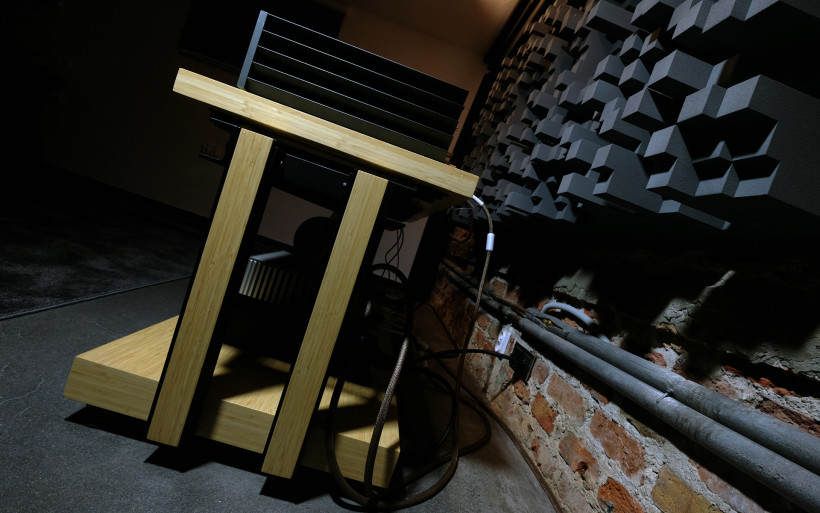 Some people say that soft materials, i.e. ply, tend to make the sound gutsier, whereas stiff platforms increase precision of what’s heard. Thus far I couldn’t deny or confirm this in any way. But after tinkering with two racks and raw floor, some audible things fleshed out. The very first switch from the K-Rak to Paweł’s product showed that this might be the case indeed. The sound became slightly thinner, but this was just one out of several quite noticeable changes. It got more agile and focused, less fuzzy. I can picture a scenario where this change wouldn’t be a desired one. Nervous, thin and sharp systems would probably benefit more from the K-Rak company. To a degree this product would serve as quite an antidote for overbearingly edgy setups. The ones in need of slightly more saturation presumably too, but this is my guess and nothing more. Yet the bottom line here is that my reference rig doesn’t need any alterations in this direction specifically. What’s important is that the Wood Block Rack didn’t spoil the outcome in this regard in particular. To be perfectly honest, past the K-Rak versus the WBF skirmish I understood fully, what the former actually did. It was used as a nicely looking ply rack and nothing else thus far, no sonic attention was given whatsoever. Yet after this experience I don’t see myself going back to this product, at least not while Boenicke W8, Trilogy 925 and LampizatOr’s flagship DAC are around.
Some people say that soft materials, i.e. ply, tend to make the sound gutsier, whereas stiff platforms increase precision of what’s heard. Thus far I couldn’t deny or confirm this in any way. But after tinkering with two racks and raw floor, some audible things fleshed out. The very first switch from the K-Rak to Paweł’s product showed that this might be the case indeed. The sound became slightly thinner, but this was just one out of several quite noticeable changes. It got more agile and focused, less fuzzy. I can picture a scenario where this change wouldn’t be a desired one. Nervous, thin and sharp systems would probably benefit more from the K-Rak company. To a degree this product would serve as quite an antidote for overbearingly edgy setups. The ones in need of slightly more saturation presumably too, but this is my guess and nothing more. Yet the bottom line here is that my reference rig doesn’t need any alterations in this direction specifically. What’s important is that the Wood Block Rack didn’t spoil the outcome in this regard in particular. To be perfectly honest, past the K-Rak versus the WBF skirmish I understood fully, what the former actually did. It was used as a nicely looking ply rack and nothing else thus far, no sonic attention was given whatsoever. Yet after this experience I don’t see myself going back to this product, at least not while Boenicke W8, Trilogy 925 and LampizatOr’s flagship DAC are around. Density and fuzziness aside, which the Wood Block Rack reduced efficiently, soundstage was altered audibly. In short, it expanded but that’s not the best part. Instruments and vocal parts became more pronounced and present, less diluted if you will. My setup can hold its ground firmly in this regard, yet the Polish piece of audio furniture pushed this boundary even further. Needless to say, this was a highly positive tweak. Slight on its own, yet with several desirable after-effects. When the background becomes less noisy, one simply hears more if a given track is loaded with necessary information and after switching from the K-Rak to the WBR this happened exactly. Slight grain removal, yet also alteration of small details suspended somewhere in virtual space far behind the very first row. To a degree the sensation resembled a leap from an ordinary .mp3 file to its high-res equivalent. There were no downsides to this and one happy journo was the outcome. The other matter that needs to be addressed is the precision itself. All things that happened once the Wood Block Rack was operational, elevated this aspect as well. Every piece of the puzzle in front of me became slightly more distinguishable and less attention and effort had to be given in order to single-out individual instruments or sounds. Yet all of that happened effortlessly and naturally. I got the impression that the Wood Block Rack didn’t serve as a magnifying glass for music (which oftentimes leads to tonal balance upped a bit), but simply sorted things out, filtered the sound in a way and in effect has made it this much more refined.
Density and fuzziness aside, which the Wood Block Rack reduced efficiently, soundstage was altered audibly. In short, it expanded but that’s not the best part. Instruments and vocal parts became more pronounced and present, less diluted if you will. My setup can hold its ground firmly in this regard, yet the Polish piece of audio furniture pushed this boundary even further. Needless to say, this was a highly positive tweak. Slight on its own, yet with several desirable after-effects. When the background becomes less noisy, one simply hears more if a given track is loaded with necessary information and after switching from the K-Rak to the WBR this happened exactly. Slight grain removal, yet also alteration of small details suspended somewhere in virtual space far behind the very first row. To a degree the sensation resembled a leap from an ordinary .mp3 file to its high-res equivalent. There were no downsides to this and one happy journo was the outcome. The other matter that needs to be addressed is the precision itself. All things that happened once the Wood Block Rack was operational, elevated this aspect as well. Every piece of the puzzle in front of me became slightly more distinguishable and less attention and effort had to be given in order to single-out individual instruments or sounds. Yet all of that happened effortlessly and naturally. I got the impression that the Wood Block Rack didn’t serve as a magnifying glass for music (which oftentimes leads to tonal balance upped a bit), but simply sorted things out, filtered the sound in a way and in effect has made it this much more refined. Let’s address the raw floor matter. This experiment could’ve been skipped with no harm done to this review/story. But subconsciously I knew it had to be done, perhaps to justify WBR’s steep asking price even further and in order to ease my own curiosity. In any case, to place costly products on the floor is a bad idea for many reasons. Since some are obvious, I won’t name all of them and will focus solely on sound instead. When both my integrated amp and DAC were placed on hard and quite even concrete surface, brittleness and mild harshness became a part of the music. It was heard that the outcome was glassier, shinier, thinner, noisier, more nervous in general and less focused. This was not only audible, but also undesired. I can’t think of any setup which would benefit from this status quo, not a single one. The change itself wasn’t of a night and a day magnitude, yet present and annoying in the long run. Perhaps if yours truly hadn’t known his reference rig this well, maybe the described effect would be easier for his ears to digest, it’s hard to say.
Let’s address the raw floor matter. This experiment could’ve been skipped with no harm done to this review/story. But subconsciously I knew it had to be done, perhaps to justify WBR’s steep asking price even further and in order to ease my own curiosity. In any case, to place costly products on the floor is a bad idea for many reasons. Since some are obvious, I won’t name all of them and will focus solely on sound instead. When both my integrated amp and DAC were placed on hard and quite even concrete surface, brittleness and mild harshness became a part of the music. It was heard that the outcome was glassier, shinier, thinner, noisier, more nervous in general and less focused. This was not only audible, but also undesired. I can’t think of any setup which would benefit from this status quo, not a single one. The change itself wasn’t of a night and a day magnitude, yet present and annoying in the long run. Perhaps if yours truly hadn’t known his reference rig this well, maybe the described effect would be easier for his ears to digest, it’s hard to say.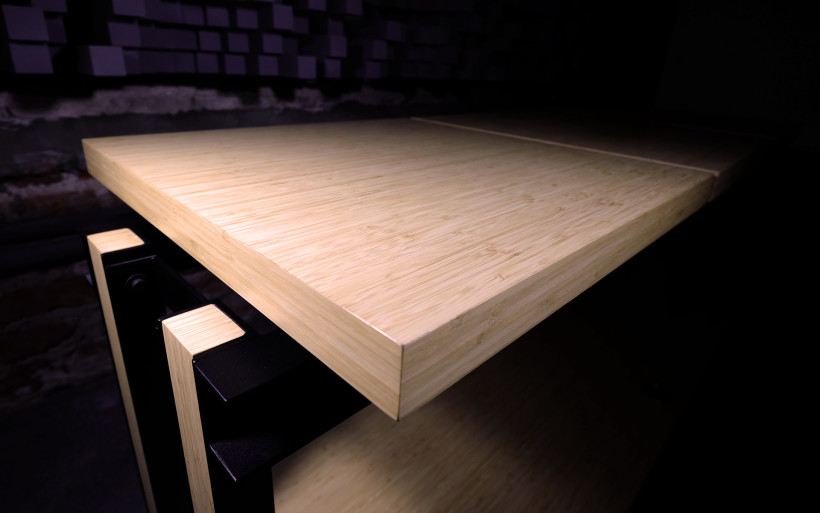 The upshot of the exercise above was obvious. If my room’s concrete floor sits at one side of the spectrum and the K-Rak is to be found at the other end of it, the Wood Block Rack’s realm is between these two, slightly closer to the latter. The Polish furniture doesn’t alter tonal balance or temperature, it makes the sound neither edgier nor milder. Its strength is in leaving the key aspects intact yet addressing fairly small but audible details and upping the ante of the not so obvious aspects like background cleanliness and precision. In short, the Polish rack is a sorting service provider and after-effects of this treatment turned out to be wholly positive and beneficial in my main setup. The delta of described changes was not big, nope. We’re still in the tweaks realm and not the major changes land. But here’s the kicker; past accommodation period (…and several months is a long time to properly accommodate) these small reworks and alterations get amplified to a point, where it becomes quite difficult to get back to the sound without their input. We simply get used to stuff we use on a daily basis. And having said that, I’m not going back, simply because K-Rak wasn’t able to perform all above mentioned improvements this well and it didn’t work with my setup in as synergistic fashion. I can’t say whether the Wood Block Rack will get along with every piece of hardware there is. But as a product which improves the already present sound without changing it in an unpredictable way, it seems to be a safe choice in general.
The upshot of the exercise above was obvious. If my room’s concrete floor sits at one side of the spectrum and the K-Rak is to be found at the other end of it, the Wood Block Rack’s realm is between these two, slightly closer to the latter. The Polish furniture doesn’t alter tonal balance or temperature, it makes the sound neither edgier nor milder. Its strength is in leaving the key aspects intact yet addressing fairly small but audible details and upping the ante of the not so obvious aspects like background cleanliness and precision. In short, the Polish rack is a sorting service provider and after-effects of this treatment turned out to be wholly positive and beneficial in my main setup. The delta of described changes was not big, nope. We’re still in the tweaks realm and not the major changes land. But here’s the kicker; past accommodation period (…and several months is a long time to properly accommodate) these small reworks and alterations get amplified to a point, where it becomes quite difficult to get back to the sound without their input. We simply get used to stuff we use on a daily basis. And having said that, I’m not going back, simply because K-Rak wasn’t able to perform all above mentioned improvements this well and it didn’t work with my setup in as synergistic fashion. I can’t say whether the Wood Block Rack will get along with every piece of hardware there is. But as a product which improves the already present sound without changing it in an unpredictable way, it seems to be a safe choice in general.
Summary
Expensive audio furniture is a delicate topic and the Wood Block Rack case is no different. The official retail price of this luxurious product (€8’250) seems to be impossible to justify at first. Said figure can get one a great DAC or an amplifier with ease. Heck, it’s highly likely that some ‘change’ will still be left to buy a cable or two and to take your significant other to a very nice restaurant. A much better way to go, then? Which leaves our Polish case defeated from both practical and financial standpoints, hence closed for good? Not necessarily, it all depends on a setup, how far one went with it already.
Audio racks are not into significant shifts in the meta of the game, but tweaking it to one’s advantage. These play in the accessories league. Hence to go after the usual suspects at first is my sincere recommendation; a transport, a source, an amplifier and a pair of speakers. After this heavyweight job’s done, I’d say that room treatment is the next obvious step. It’s surprising for how little we can make the sound better within our own four walls. A thick carpet in front of a pair of floorstanders will do wonders in many cases and the same story is with proper placement of these boxes in a room. Once all this is sorted, the next order of business is to handle what’s left, namely accessories; cables and such. Only once it’s known that the key parts of the setup aren’t going anywhere and everything else is handled, then is the time to go after an audio rack. To not do it any earlier is the smart play. In such circumstances, an investment in a piece of furniture of this very specific kind isn’t unwise any longer but the next obvious step instead. In short, it’ll work best for people who’ve done everything else, individuals left with no room to maneuver without swapping big pieces in their own audio puzzles.
Let’s do some basic math. A set of four Franc Audio Accessories Ceramic Disc Fat feet will set you back for €850. A dozen of normally unobtainable Ceramic Disc Tablets is presumably no less that €1’000, that’s my guess. A solid flight case to make sure that the goods will arrive unharmed? Another €500 gone just like that. That’s €2300+ spent already and we haven’t yet touched the sheer cost of other materials, veneering, CNC hours and distributors’ cut. Big percentage of the retail ask goes to them and that’s the sacrifice Paweł had to make in order to establish a relation with other countries. Now he earns less on a product in comparison to when his business model was direct, yet sells more of them. It is what it is and having said that, either one is fine with this reality or he’d be better off somewhere else. There are more affordable racks available, it’s a free world we live in. Point being, after everything is taken into consideration, the price tag on the Wood Block Rack is not out of this world.
As far as sound quality goes, the Wood Block Rack turned out to be audibly beneficial. The overall tonality of my setup hasn’t changed, it became neither fuzzier nor edgier, but more refined and substantial instead. The soundstage got slightly bigger and more accurate sound was the outcome. It also got smoother and in general the impression was that the Wood Block Rack input allowed me to finally hear what my reference devices sound like, it magnified their characteristic in a way. There were no downsides to this Polish treatment, the overall quality level was pushed even further in the process and not by a small margin. The audible result was there. This very useful tool in my journalistic efforts outgrew the initial expectations and as such is here to stay. The bottom line is that Wood Block Rack really works, is finely crafted, feels substantial, reliable and looks grand. It was built by an engineer who’s been around for quite a while and knows a thing or two about resonance control. If your next step is to go after a product of this sort, one of Franc Audio Accessories racks suited to your personal size needs sounds like a solid plan to this scribe. Even despite its steep asking price. ‘Till next time!
Associated equipment:
- Wzmacniacz: Trilogy 925
- DAC: Lampizator Golden Gate (Psvane WE101D-L + KR Audio 5U4G Ltd. Ed.)
- Speakers: Boenicke Audio W8, Echobox Apriori
- Transport: Asus UX305LA
- Speaker cables: Forza AudioWorks Noir Concept, Audiomica Laboratory Celes Excellence
- Interconnects: Forza AudioWorks Noir, Audiomica Laboratory Erys Excellence
- Power supply: Gigawatt PF-2 + Gigawatt LC-2 MK2 + Forza AudioWorks Noir Concept/Audiomica Laboratory Ness Excellence
- Rack: Lavardin K-Rak
- Music: NativeDSD
Retail price of reviewed component in EU:
- Franc Audio Accessories Wood Block Rack 1+3: €8’250
Manufacturer: Franc Audio Accessories



